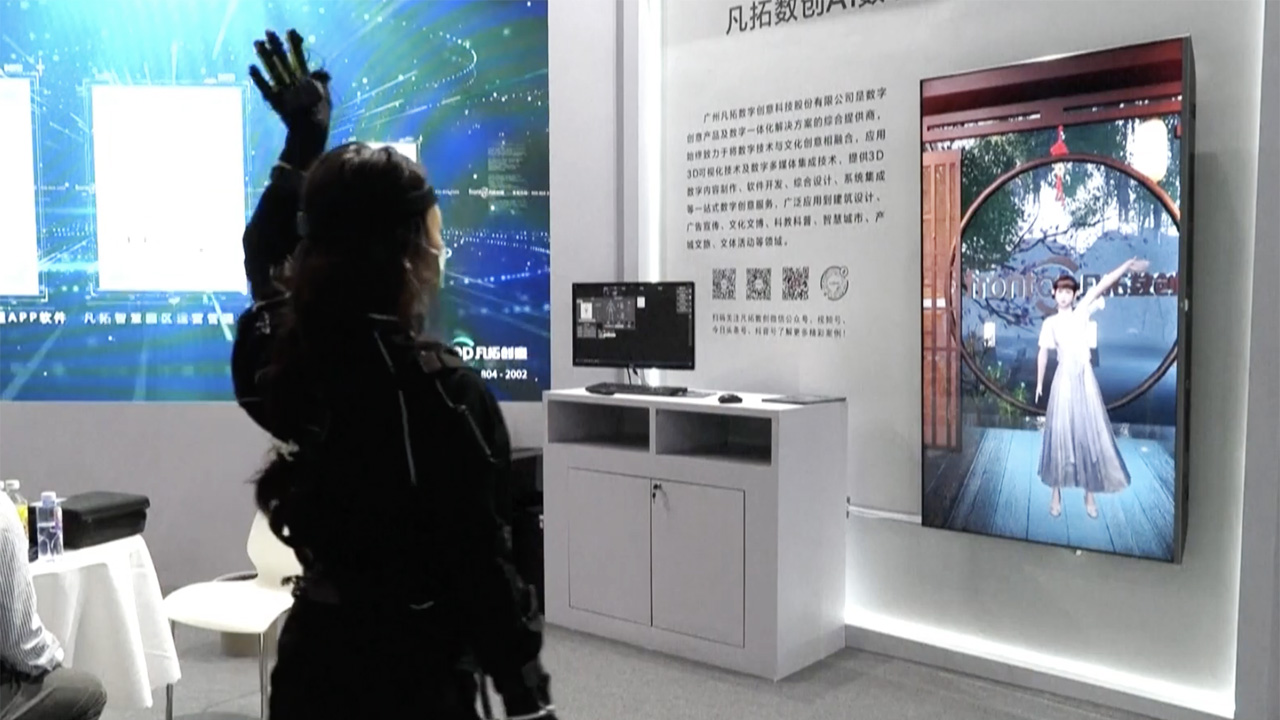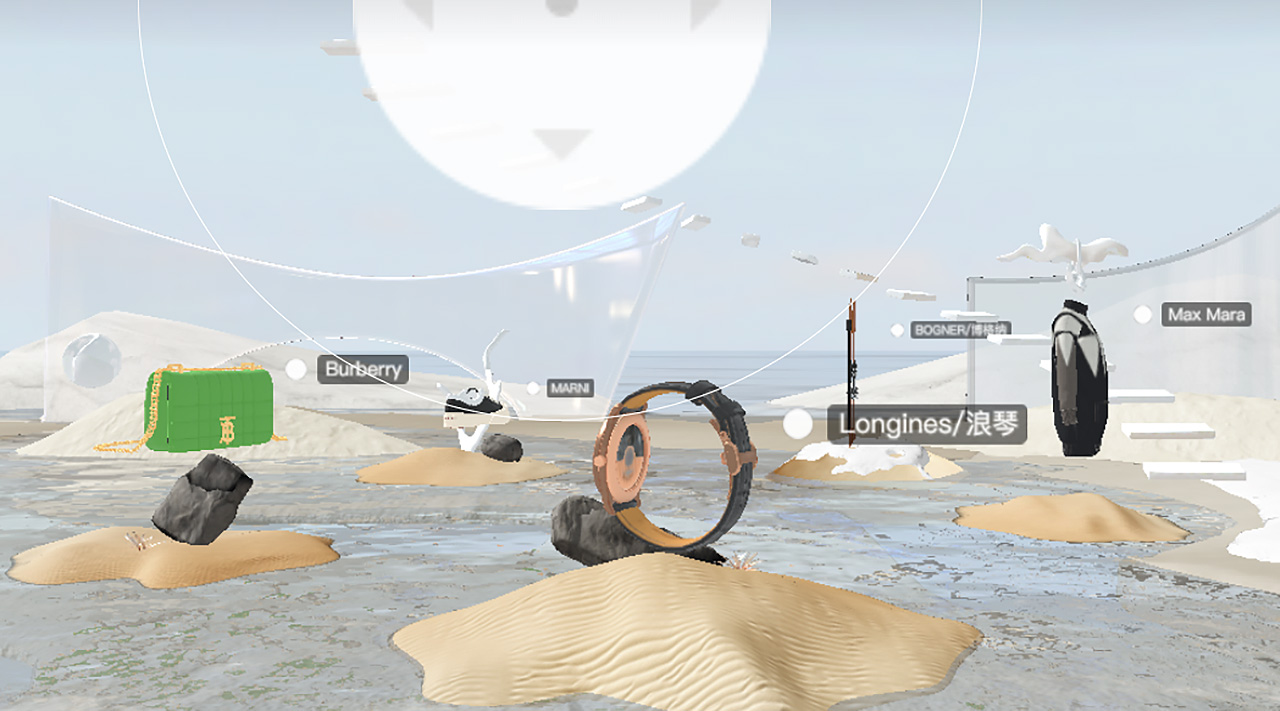It’s common knowledge that the metaverse in China operates on many unique characteristics and follows a distinct development trajectory from that of the rest of the world. The “Chinaverse,” as it’s sometimes called, largely runs on consortium blockchains developed by Chinese tech giants, and NFT resale, flipping, and speculation are banned, as is most cryptocurrency trading.
However, in recent weeks, China has been emphasizing a relatively new metaverse concept: “Use the virtual to enhance the real, use the virtual to strengthen the real” (以虚促实,以虚强实). This suggests that the official Chinese approach to the metaverse will work totally differently to how the metaverse is applied in the rest of the world.
Global metaverses pivot towards gamification, but what does the Chinaverse serve?

At the 2022 World Metaverse Conference in Beijing, the metaverse was again framed as integrating China’s digital and real economy, thus using the virtual to enhance and strengthen the real. Image: TribuneNow on YouTube
The global metaverse has evolved to be entertainment-heavy and undoubtedly the new darling for cultural organizations and luxury houses as they leverage Web3 technologies to collaborate, build, and gamify with a worldwide community. For example, at the latest New York Fashion Week, multiple renowned brands and designers showcased their upcoming collections that incorporated heavy metaverse and blockchain components. While China’s metaverse is increasingly important for global brands as well — demonstrated by Dior’s recent Spring 2023 ready-to-wear show in the virtual space Meta Ziwu — its primary objective is to advance China’s real-life economy, especially its industrial prowess.
The phrase, “use the virtual to enhance the real, use the virtual to strengthen the real,” was first mentioned in March by Zhang Ying, Assistant Director of Shanghai’s Economic and Information Technology Commission and a Chinese People’s Political Consultative Conference member. She warned about the risks of speculative investment in the the country’s metaverse as a result of its overemphasis on entertainment. Since then, multiple experts have repeated the phrase.
For example, at the 2022 World Metaverse Conference hosted in Beijing in August, Li Bohui, a Chinese Academy of Engineering member, mentioned the phrase and emphasized that the industrial metaverse will integrate the development of the digital and real economy in China. Also in August, Shanghai established the Metaverse and Virtual-Reality Interchange and Interconnection Research Institute (元宇宙与虚实交互联合研究院), which claims tech giants like Huawei and Tencent as members and whose core mission is to “use the virtual to strengthen the real.” In September, the same wording appeared in the title of a Xinhua op-ed, which calls for removing the “fake bubbles” and achieving “real development progress” through the metaverse.
Industrial prowess and national power

adidas Originals held a digital concert in Tencent Music’s metaverse space, TMELAND. Photo: adidas Originals x Tmeland
At its core, the concept means that China prioritizes the application of metaverse technologies in a broad range of industries to enhance its national power. The op-eds named aerospace, biomedicine, autonomous vehicles, nuclear power plants, and forestry protection as promising areas. The Nanjing University of Information Science and Technology even renamed its Information Engineering Department to Metaverse Engineering Department, becoming the first university department in China to bear the word “metaverse.” It is telling that this development did not take place at an art, design, or fashion education institution, but instead at a university renowned for its expertise in STEM and meteorology.
Of course, this does not mean that China’s metaverse completely discards entertainment or that the Western metaverse has no industrial application. Tencent Music has hosted digital concerts in its metaverse space TMELAND, while the leading Anime, Comics, and Games (ACG) site Bilibili vows to pioneer China’s UGC metaverse. Rather, it shows that China clearly views entertainment as of secondary importance in its state-led Web3 approach. The phrase could have been popularized through many Chinese localities systematically integrating the metaverse into their 14th Five-Year Plans as they hope to preemptively discourage investment frenzy in areas where regulations have yet to be introduced, such as digital fashion and real estate.
Easing fears in a brave new world

Burberry and other luxury brands made use of Tmall Luxury Pavilion’s 3D shopping feature. Photo: Alibaba Group
Detrimental effects of “abandoning the real to pursue the virtual” (脱实向虚) include the appearance of de facto cryptocurrencies, gaming addiction, unauthorized cross-border data transfers, and fraudulent investment schemes. China already faces these issues to various extents, and unmonitored metaverse development could exacerbate those concerns.
Eager as they might be to embrace China’s rapid digitization, brands should be cautious about brandishing massive metaverse ambitions in the mainland. Doing so might invite unwanted scrutiny on whether these initiatives present problems related to being “too virtual.” Instead, cooperating with existing, reputable Chinese metaverse platforms presents far fewer risks as Chinese tech giants are actively supporting the government’s official objectives. That telling phrase also stresses the importance of combining the metaverse with physical products or real-life utilities and events in China.
It is not inconceivable that Beijing’s focus on using Web3 to promote nationalized industries will put it on a collision course with Washington’s tech export control policies, which have already targeted China’s semiconductor and technology sectors. Thus, brands should proactively develop the most optimal strategy to engage the Chinaverse that is separate from their global metaverse strategy.
A good start would be to join metaverse events that capitalize on China’s already advanced e-commerce infrastructure, such as Prada’s 3D digital release of its early autumn collections on Tmall or Burberry’s participation in a metaverse shopping festival that is part of Tmall Luxury Pavilion’s fifth anniversary. From there, brands can explore opportunities to become a part of other initiatives on local Web3 platforms, while making sure that they are consumer-centric to avoid being in the crosshairs of the US-China tech rivalry.
This article originally appeared on our sister site, Jing Daily.



